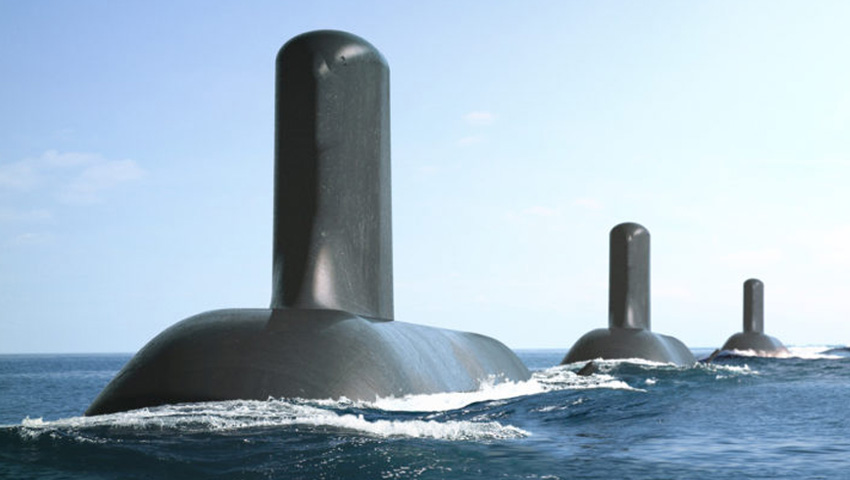The Future Submarine Program to deliver 12 new Attack Class submarines is constantly in the media, reflecting its magnitude as the largest Defence project undertaken in Australia. Sometimes the media attention has been positive and sometimes negative, either way, the Senate estimates and committee hearings are worth every second, explains Chris Skinner.
To continue reading the rest of this article, please log in.
Create free account to get unlimited news articles and more!
The decision-making process to arrive at the current early stages of ab initio design of the Attack Class also continue to attract attention in Senate estimates and joint parliamentary committee hearings to elicit explanations of apparent inconsistencies and unfathomable decisions and uncertain progress.
This need not be so if the ministers would be a bit more tolerant of detailed information being made public. There appears to be a reluctance to share information that would put the mind at rest on the basis they might be exploited in sensational media stories.
This is unfortunate and shows a need for greater transparency and maturity on how major recipients of public funding are held to account with straightforward answers to questions and concerns.
The Australian National Audit Office (ANAO) has conducted three audits related to the Attack program: on the competitive evaluation process (CEP) to select the international design partner, Naval Group; on the comprehensive Naval Shipbuilding Program; and most recently the Future Submarine Program – Transition into Design.
The latter has been the subject of hearings by the joint parliamentary committee on public accounts and audit, with the most recent public hearing on 20 May from which several new insights emerged. I have summarised these as follows, but with the intent to show how the controversial aspects that have been canvassed in the media are really not controversial at all, but rather confirm a deliberate and professional process is being followed by all parties, and progress is soundly based.
Firstly, the non-issue of cost estimates, whether in constant (at 2016) dollars or so-called out-turned dollars that reflect inflation indexed at the approved Treasury rate and guestimates on what will happen to foreign exchange rates, especially for US dollars, euros and pounds.
In 2015, before the outcome of the CEP, Defence stated an estimate of the FSP cost at $50 billion outturned dollars. Then in April 2016 the CEP resulted in selection of the French option and the estimate became $50 billion in constant (2016) dollars. It was pure coincidence that the $50 billion was used for two separate estimates. Defence has agreed to provide a reconciliation of the two figures in response to a question on notice.
Secondly, the timing issue. The published delivery of first of class Attack is 2032 to begin two years of test and evaluation and fleet introduction in 2034. This has not changed and has been reaffirmed even after there have minor delays in start of systems requirements review and deliberate delay in start of construction to 2024 in order to reduce risk by enabling greater design maturity.
A closely related subject is the life-of-type-extension (LOTE) for the six currently serving Collins Class submarines. ANAO has examined two major programs of enhancement underway on the Collins Class and their findings are worthy of consideration.
However, what has not been published even as a proposed program is the LOTE program scope, yet we have now been told that some of the major equipments for the Attack Class are being considered for LOTE and this makes good sense for several reasons of commonality of support and risk reduction.
The general manager submarines even stated that candidate MTU diesel engines for electrical generation are being endurance tested in Germany right now. Other candidates for common application include permanent magnet main propulsion motor and related switchboards.
On the other subject of battery technology, the JCPAA were told that battery technology is under active research and development with the Defence Science and Technology Group and this work is applicable to both LOTE and Attack. The two programs were described as synergistic.
Finally, there has been resolution of the apparent disparity between the Naval Shipbuilding Advisory Board (NSAB) recommendations as reported by Defence to ANAO and the action that has followed.
As I have always believed, the NSAB was exercising competent and experienced judgement in recommending that Defence consider alternative proposals if agreement could not be reached with Naval Group, and in response the FSP project team conducted a desk-review of alternatives that included the Swedish A26 program.
However, in the several weeks that followed, agreement was reached on the Strategic Partnering Agreement (SPA) and therefore the recommendation from the NSAB lapsed.
The only report from the review of alternatives was made in the context of the recommendation to the minster to approve the SPA, which duly occurred.
A final issue was the application of shipbuilding automation, which is being investigated with the assistance of the Electric Boat company, the world’s most experienced submarine builder. It transpires there will be applications of digital design technology that can be usefully applied to the Attack program notably in jigs and futures for pressure hull construction, but these will not affect the estimated workforce requirement for 1,100 direct jobs.
Overall, these several insights to the program are all reasonable and impressive manifestations of a professionally run program with a highly competent and proactive team.
So let’s stop fussing about who said what in 2016 and start discussing how we build up the skills needed in Australia to conduct the detailed design and construction of Attack and at the same time start the major project approval process for Collins LOTE.
Christopher Skinner is a former Navy engineer with extensive sea service and development experience ashore in defence and transportation domains. He is the editor of the Nuclear Propulsion Roadmap for Australia.

 Login
Login







